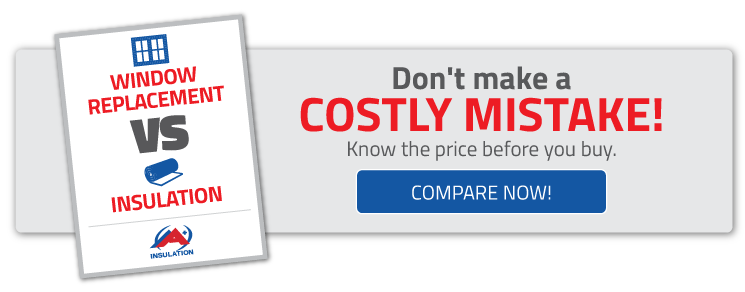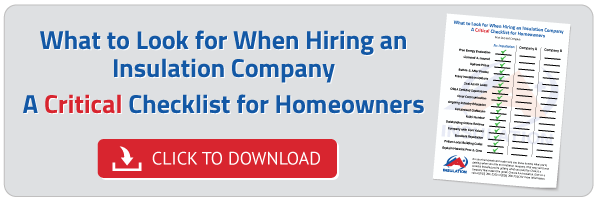 At A+ Insulation, we work hard to take care of our customers and have since opening our doors back in 2004. We value doing the job right, not cutting corners, and standing behind our work. Our technicians are not only masters of their craft, but they’re dedicated customer service experts. We value each and every customer and thank them for trusting us to get the job done for them. Here are a few reasons why our customers love us and why you should call us for your home insulation needs .
At A+ Insulation, we work hard to take care of our customers and have since opening our doors back in 2004. We value doing the job right, not cutting corners, and standing behind our work. Our technicians are not only masters of their craft, but they’re dedicated customer service experts. We value each and every customer and thank them for trusting us to get the job done for them. Here are a few reasons why our customers love us and why you should call us for your home insulation needs .
Angie’s List Super Service Award Winner
Proof of our dedication to customer service is winning the Angie’s List Super Service Award five years in a row. The Super Service Award honors excellence among service and health providers who maintain superior service ratings and reviews on Angie’s List. This means we are among the top 5% of service businesses on Angie’s List in the Kansas City area.
See what other awards and certifications we have won:
Memberships & Affiliations
- Blow-In-Blanket Contractors Association (BIBCA)
Green Certifications
- EnergyStar.gov – Home Performance with energy Star
- Green Seal Certification – www.greenseal.org
- NAHB – National Association of Home Builders Certified Green Professional
Awards
- Building Solutions Specialist
- Certainteed Certified Master Craftsman
Screening
HomeAdvisor Screened. View Details
We Let Our Work, and Our Customers, Speak for Us
We don’t want you to take our word for it. If you’re looking to see what customers have to say about us, check out the customer testimonials on our webpage, as well as on other review sites, like Google+ and Facebook. Hear what people are saying about us, and see if it helps you decide if we earned that A+ in our name.
Review by a homeowner in Overland Park, KS
Project: Install or Upgrade Batt, Rolled or Reflective Insulation
“Mike O’Hara and his team were very professional! Offered a great presentation on the services they offered and explained every step in detail. It was great to watch the whole procedure, crews were wonderful and the clean up was great! I would highly recommend them!”
Review by a homeowner in Olathe, KS
Project: Install or Upgrade Blown-in Insulation
“We noticed an immediate improvement in the amount of time our A/C was running during brutally hot days.”
Review by a homeowner in Kansas City
“Mike goes over every possible way to save money and is happy to give his expert advice with a non-biased attitude. When asking his opinion, he would tell me straight, but would never push his opinion on me. Mike was helpful, easy to work with, and significantly less expensive than any other company we got quotes from. He charges by the square foot, not by the job, and he includes patching and spackle in his pricing. He comes highly recommended.
Review by a homeowner in Olathe, KS
Project: Install Spray Foam Insulation
“Excellent customer service. Very knowledgeable, great communication, very reliable.”
Review by a homeowner in Kansas City
“From the beginning I knew Mike and his team at A+ Insulation would do a great job. When Mike came to give us the estimate, both he and I climbed up in the attic to look around. He didn’t just peek his head up in the attic. He was willing to show me (a woman) what he was going to be doing. While we were up there, he found exposed wires and lighting that were a fire hazard and needed to be taken care of before insulation could be installed. He even offered to do these things for us. His staff was friendly, and cleaned up the area when they were finished. I could have paid less somewhere else, but you get what you pay for. Peace of mind is priceless.
Review by a homeowner in Spring Hill, KS
Project: Install or Upgrade Batt, Rolled or Reflective Insulation
“I have used a lot of Insulation contractors over the years and this is the best so far. I am glad we have found someone who still believes in a quality job.”
Need more convincing? Check out our over 125 reviews on Home Advisor.
We want to be your insulation company!If you have any questions about our work, our materials, our technicians, or our prices, we will be happy to answer any questions you may have. Call us at (913) 281-2250 or (816) 268-7511.
 Gaps Allow Air to Move from the Bottom of Your Home to the Top
Gaps Allow Air to Move from the Bottom of Your Home to the Top
 While lack of Insulation is not a visible problem in your home, it can be a very uncomfortable and costly problem. According to
While lack of Insulation is not a visible problem in your home, it can be a very uncomfortable and costly problem. According to 



 warmth, a food source, and moisture. Because two of the three conditions necessary for mold growth: warmth (temperatures between 47-120 degrees Fahrenheit), and food (wood, paper, or any organic matter) already exist in our homes, mold can grow just about anywhere there is
warmth, a food source, and moisture. Because two of the three conditions necessary for mold growth: warmth (temperatures between 47-120 degrees Fahrenheit), and food (wood, paper, or any organic matter) already exist in our homes, mold can grow just about anywhere there is 
 There are many positive features of older homes that can potentially, if they don’t already, provide energy-saving qualities. For instance, tin roofs are popular in older homes and can be restored to help reflect solar heat and keep the house cool. The biggest concern for homeowners of older houses in relation to energy waste is
There are many positive features of older homes that can potentially, if they don’t already, provide energy-saving qualities. For instance, tin roofs are popular in older homes and can be restored to help reflect solar heat and keep the house cool. The biggest concern for homeowners of older houses in relation to energy waste is  The thought of performing costly home maintenance typically scares homeowners from having a proper inspection done on their home. Putting off home energy evaluations as an attempt to avoid a potentially large bill is common, but also completely backwards. In fact,
The thought of performing costly home maintenance typically scares homeowners from having a proper inspection done on their home. Putting off home energy evaluations as an attempt to avoid a potentially large bill is common, but also completely backwards. In fact,  An energy assessment will determine where you require additional insulation and where you have leaks. As a homeowner, it’s beneficial to be aware of your home’s problem areas. When these areas are repaired or sealed it can make a huge difference to your home’s heating and cooling costs. The
An energy assessment will determine where you require additional insulation and where you have leaks. As a homeowner, it’s beneficial to be aware of your home’s problem areas. When these areas are repaired or sealed it can make a huge difference to your home’s heating and cooling costs. The  The first place to look is the attic, because heat rises. On a cold day your house acts like a big chimney
The first place to look is the attic, because heat rises. On a cold day your house acts like a big chimney  This sets off a chain reaction where the low pressure near the foundation of your house attempts to balance by
This sets off a chain reaction where the low pressure near the foundation of your house attempts to balance by  On the outside of your home, we’ll look for places where building materials join including:
On the outside of your home, we’ll look for places where building materials join including: Inside your home, there are numerous opportunities for leaks to occur, such as:
Inside your home, there are numerous opportunities for leaks to occur, such as: Once homeowners are aware of the potential improvements needed in their home’s insulation, they can plan accordingly to repair them. Not every household is set up financially to tackle costly home improvement projects at the drop of a hat. The benefit of having a
Once homeowners are aware of the potential improvements needed in their home’s insulation, they can plan accordingly to repair them. Not every household is set up financially to tackle costly home improvement projects at the drop of a hat. The benefit of having a  For those not in the insulation field, the differences between
For those not in the insulation field, the differences between  At A+ Insulation, we work hard to take care of our customers and have since opening our doors back in 2004. We value doing the job right, not cutting corners, and standing behind our work. Our technicians are not only masters of their craft, but they’re dedicated customer service experts. We value each and every customer and thank them for trusting us to get the job done for them. Here are a few reasons why our customers love us and why you should call us for your home insulation needs .
At A+ Insulation, we work hard to take care of our customers and have since opening our doors back in 2004. We value doing the job right, not cutting corners, and standing behind our work. Our technicians are not only masters of their craft, but they’re dedicated customer service experts. We value each and every customer and thank them for trusting us to get the job done for them. Here are a few reasons why our customers love us and why you should call us for your home insulation needs .